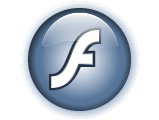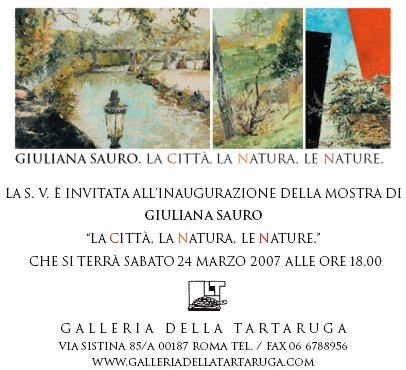Contrariamente a quando potrebbe sembra, questo post non parla di software (e, dunque, di versioni Beta) ma racconta una squisita avventura gastronomica che si e’ svolta a Volterra nel ristorante Don Beta.
Situato in una delle vie principali del centro storico della cittadina toscana, Don Beta e’ un grazioso locale molto accogliente e dall’aspetto familiare. La nostra fortuna quando siamo arrivati e’ stata essere piuttosto numerosi e trovare il locale pieno: per questo motivo siamo stati ospitati in una specie di saletta privata, chiamata “il sollazzo”. MERAVIGLIOSO! Il posto ideale dove poter chiacchierare in santa pace e gustare le bonta’ del locale. Ma veniamo proprio ai piatti succulenti che ci hanno offerto.
L’antipasto apre le danze con un assaggio di bruschette al salame spalmabile, alla salsa rossa di porcini, al pate’ d’anatra insieme ai classici gusti olio e aglio oppure olio e pomodoro.
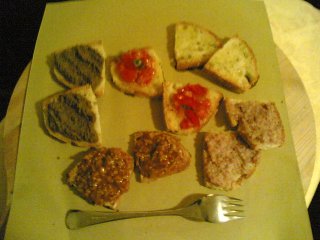
Si prosegue con salumi vari, pate’ d’anatra (tenuto in caldo da una piccola candela…) e formaggio e miele deliziosi:
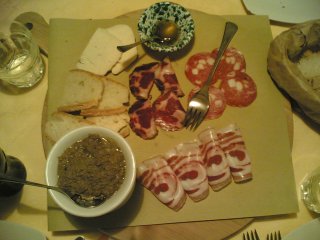
Il pate’ era davvero buono, saporito ma non invadente sul palato. Insieme agli antipasti, dell’ottimo pane ci ha fatto compagnia in attesa della pasta. Il primo scelto all’unanimita’ e’ stato un gustoso piatto di ciondoli alle noci:
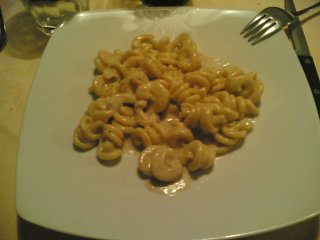
Ottimo piatto, forse troppo intenso il sapore del burro, ma direi che merita di essere assaggiato. Siamo dunque ai secondi, dei quali vi segnalo le scaloppine ai funghi:
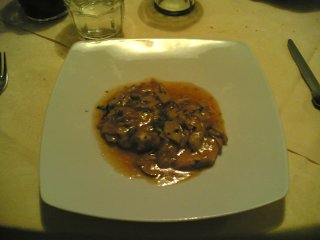
e la spettacolare tagliata al rosmarino:
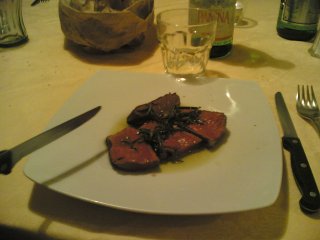
squisita e delicata, ma soprattutto esaltata nel gusto da un olio delizioso come base. Il dolce e’ stato mangiato in una pasticceria la’ vicino, ma Don Beta proponeva una buona scelta di dessert. Volterra promossa a pieni voti! Sulle vie del centro c’era solo l’imbarazzo della scelta del ristorante, compresi quelli specializzati in cacciagione (con interi menu’ a base di cinghiale!).
I piatti sono semplici da riprodurre, anche se certi ingredienti (come il salame di cinta senese) dovrebbe essere reperito sul posto…
Alla prossima.
![]()








